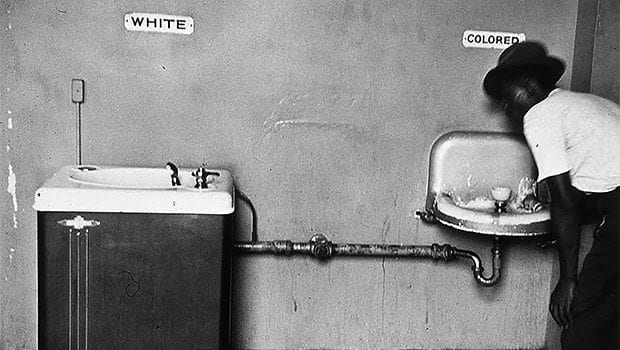Addison Gallery uses Civil Rights images to inspire young social advocates in ‘Respect Existence or Expect Resistance’

Through July 30, “Respect Existence or Expect Resistance” at Phillips Academy’s Addison Gallery of American Art displays startling, relevant images of the fight for civil rights. Pulled from the gallery’s collection, the 38 photographs speak both to the social movement itself and to the importance of eyewitnesses in the form of photographers and journalists.
Allison Kemmerer, the gallery’s Mead Curator of Photography and Curator of Art after 1950, says the exhibit was inspired both by current political events and by the acquisition of photographs by Gordon Parks and Bruce Davidson. In a moment when the value of the media is hotly debated, the exhibit also serves as a reminder of how important image-makers and storytellers are to the preservation of history. “Activists and journalists on both sides of the struggle realized early on the power of photographs to awaken public outrage, raise awareness, and elicit support,” Kemmerer says.
The images’ power comes from both aesthetic appeal and dramatic force. “Selma to Montgomery March,” a gelatin silver plate by James Karales, is a volatile, stunning landscape. A stormy sky taking up three-quarters of the frame mirrors the energy of the protesters below. In stark black and white, the figures wind their way through the photograph in a perfect line, receding gracefully into the background. Here, advocacy is art. The form and craftsmanship is equally important to the content.
On the web
For more information about the Addison Gallery and “Respect Existence or Expect Resistance,” visit: www.andover.edu/Museums/Addison/Exhibitions/CivilRightsPhotos/Pages/default.aspx
In Jack R. Thornell’s piece “James Meredith after being shot with bird shot,” the drama of the scene holds its power. Meredith lies in the middle of the road writhing in pain, his face twisted in agony. He braces himself against the ground with his arms, but his leg twists out at an unnatural angle. It’s empathy that drives this piece, the dark knowledge that a senseless act of racism has caused this anguish.
Kemmerer pulled the name of the exhibit from a sign she saw at the Boston Women’s March earlier this year. The curator hopes that the images will have just as much of an impact now as they did in the ’50s and ’60s. She says, “It is my hope that the exhibition not only provides students and visitors with a window into the Civil Rights Movement but that the tenacity and courage of the people depicted in these photographs inspires hope and faith in the power of people as well as a will to advocate for social justice.”






![Banner [Virtual] Art Gallery](https://baystatebanner.com/wp-content/uploads/2024/04/NJ-H_1-713x848.jpg)

